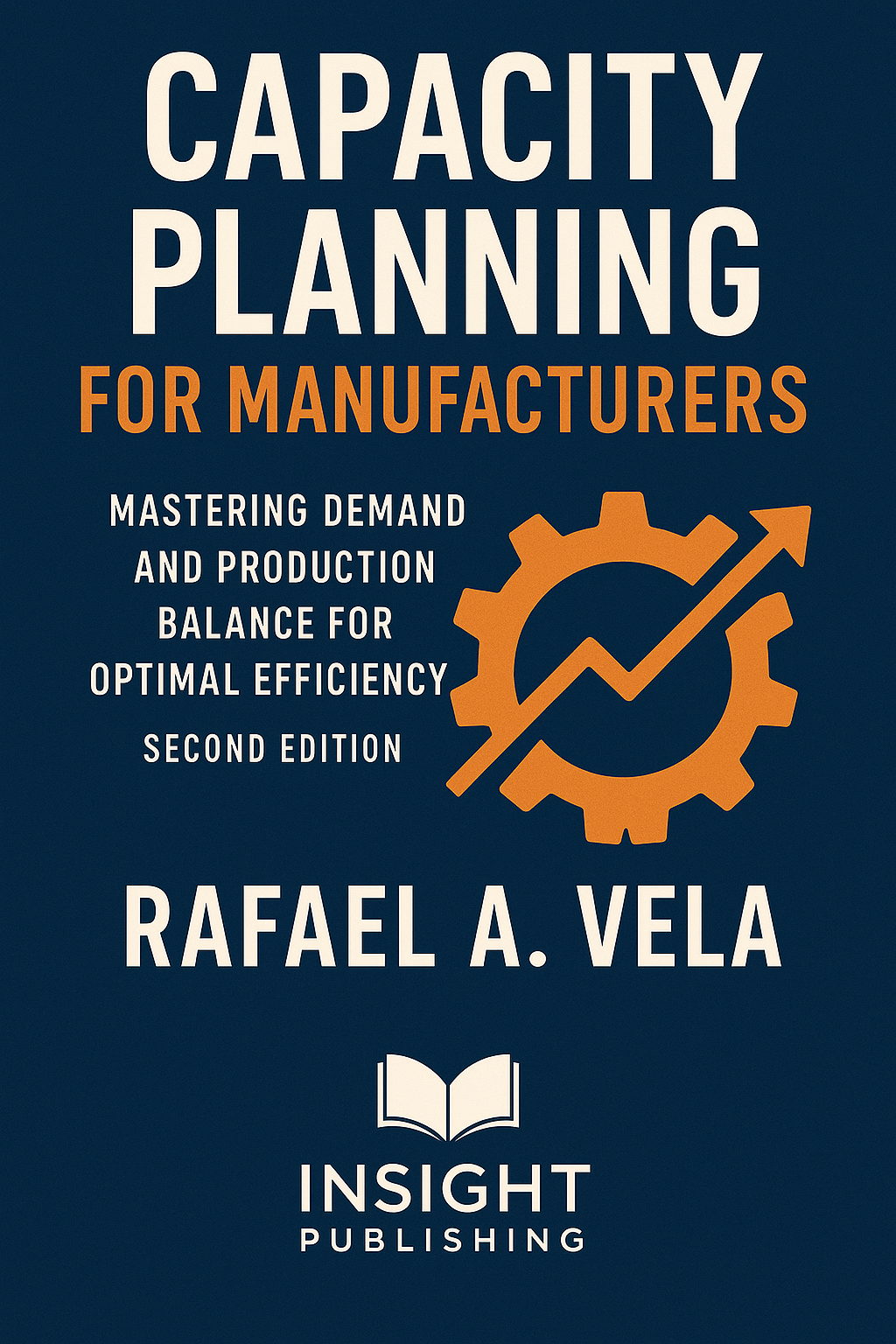
Capacity Planning for Manufacturers - Mastering Demand and Production Balance for Optimal Efficiency - Second Edition - 164 pages
In the complex world of manufacturing, balancing demand and production is crucial for optimal efficiency and profitability.
CAPACITY PLANNING FOR MANUFACTURERS provides a comprehensive guide to mastering this critical process. Learn how to accurately forecast demand, assess your current capacity, and implement effective planning strategies to eliminate bottlenecks and maximize resource utilization.
This book equips you with the tools and techniques to navigate fluctuating demand, manage constraints, and leverage technology for data-driven decision making. Discover how to ensure you can consistently meet customer needs while minimizing costs and maximizing output.
Transform your production capabilities and achieve sustainable growth.
Table of contents:
Chapter 1: Fundamentals of Capacity Planning - 11
- Defining Capacity in Manufacturing - 11
- Types of Capacity: Design, Effective, and Actual - 11
- Key Concepts in Capacity Management - 14
Chapter 2: Assessing Current Capacity - 16
- Conducting a Capacity Audit - 16
- Identifying Bottlenecks and Constraints - 18
- Tools for Measuring Capacity Utilization - 19
Chapter 3: Forecasting Demand - 23
- The Role of Demand Forecasting in Capacity Planning - 23
- Methods for Accurate Demand Prediction - 27
- Aligning Forecasts with Capacity Needs - 28
Chapter 4: Types of Capacity Planning - 33
- Lead Capacity Planning - 33
- Lag Capacity Planning - 40
- Match Capacity Planning - 48
Chapter 5: Creating a Capacity Plan - 58
- Steps to Develop a Capacity Plan - 58
- Short-Term vs Long-Term Planning - 61
- Tools and Techniques for Planning - 70
Chapter 6: Balancing Capacity and Demand - 76
- Strategies for Balancing Production with Demand - 76
- Managing Production Schedules and Lead Times - 78
- Understanding Production Schedules - 78
- Managing Lead Times - 79
- Balancing Production Schedules and Lean Times - 81
- Overcoming Seasonal and Fluctuating Demand - 82
Chapter 7: Resource Allocation and Optimization - 84
- Allocating Resources for Maximum Efficiency - 84
- Managing Labor, Equipment, and Materials - 92
- Techniques for Resource Optimization - 94
Chapter 8: Managing Capacity Constraints - 97
- Identifying and Mitigating Capacity Constraints - 97
- Lean Manufacturing Principles for Capacity Management - 99
- The Role of Technology in Overcoming Constraints - 100
Chapter 9: Capacity Planning for Different Types of Manufacturing - 103
- Discrete Manufacturing vs. Process Manufacturing - 103
- Capacity Planning in Make-to-Order and Make-to-Stock Environments - 105
- The Role of Customization in Capacity Planning - 107
Chapter 10: The Impact of Maintenance on Capacity Planning - 109
- Preventative Maintenance and Capacity - 109
- Planning for Downtime and Breakdowns - 110
- Managing Capacity During Maintenance Periods - 112
Chapter 11: Using Technology for Effective Capacity Planning - 114
- Enterprise Resource Planning (ERP) Systems and Capacity Management - 114
- Software Solutions for Capacity Planning - 116
- Data Analytics in Capacity Decision Making - 117
Chapter 12: Measuring Capacity Planning Success - 119
- Key Performance Indicators (KPIs) for Capacity Management - 119
- Tracking and Analyzing Capacity Utilization - 122
- Continuous Improvement in Capacity Planning - 123
Conclusion - 126
- The Future of Capacity Planning in Manufacturing - 126
- Final Thoughts on Ensuring You Can Meet Demand - 126
Appendices - 128
- Appendix A: Applying Lean Manufacturing to Improve Capacity Utilization - 129
- Appendix B: Capacity Buffering: Strategies for Managing Fluctuations - 133
- Appendix C: Scenario Planning for Effective Capacity Management - 138
- Appendix D: The Hidden Costs of Overproduction and Its Impact on Capacity - 143
- Appendix E: The Role of ERP Systems in Optimizing Capacity - 147
- Appendix F: Time Series Forecasting Methods for Capacity Planning - 152
- Appendix G: Understanding the Theory of Constraints in Capacity Management - 156
- Appendix H: Bibliography and Suggested Reading - 161
